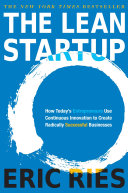

Validated learning is a fundamental concept in 'The Lean Startup' that emphasizes the importance of learning through experimentation. In traditional business practices, companies often rely on extensive market research and assumptions about customer needs before launching a product. However, Eric Ries argues that this approach can lead to wasted resources and missed opportunities. Instead, he advocates for a cycle of building a minimum viable product (MVP), measuring its performance in the market, and learning from the results. This iterative process allows startups to quickly gather feedback from real users, which helps them understand what works and what doesn't. By focusing on validated learning, entrepreneurs can make informed decisions about product development, pivoting strategies, or scaling operations based on actual data rather than assumptions. This approach not only minimizes risk but also accelerates the path to product-market fit.
Continue readingThe Build-Measure-Learn feedback loop is a core principle of 'The Lean Startup' methodology. It involves three stages: building a product, measuring its performance, and learning from the results. Startups begin by creating a minimum viable product (MVP) that includes just enough features to attract early adopters. Once the MVP is launched, the next step is to measure how it performs in the market. This measurement can include user engagement metrics, sales data, and customer feedback. The final stage is learning, where entrepreneurs analyze the data collected to determine whether to pivot (change direction) or persevere (continue on the current path). This loop is crucial because it enables startups to make quick adjustments based on real-world feedback, fostering a culture of continuous improvement and innovation.
Continue readingThe concept of the Minimum Viable Product (MVP) is central to 'The Lean Startup' approach. An MVP is the simplest version of a product that allows a team to start the learning process as quickly as possible. Instead of investing significant time and resources into developing a fully-featured product, startups are encouraged to create a basic version that meets the core needs of early adopters. This strategy not only helps in validating assumptions about the product but also reduces the time to market. By launching an MVP, companies can gather valuable insights into customer preferences and behaviors, which can inform future iterations of the product. The MVP approach minimizes waste and maximizes learning, making it a critical tool for startups aiming to achieve product-market fit efficiently.
Continue readingThe decision to pivot or persevere is a crucial aspect of the Lean Startup methodology. After going through the Build-Measure-Learn feedback loop, startups must evaluate whether their current strategy is effective. If the data indicates that the product is not meeting customer needs or that the market is not responding positively, entrepreneurs might choose to pivot, which means changing the direction of their product or business model. This could involve altering the product features, targeting a different customer segment, or even changing the entire business concept. Conversely, if the feedback suggests that the product is on the right track, the startup can choose to persevere, continuing to refine and enhance the product based on user feedback. This decision-making process is vital for startups to remain agile and responsive to market demands.
Continue readingInnovation accounting is a unique measurement system introduced in 'The Lean Startup' that helps entrepreneurs evaluate their progress in a way that is relevant to their specific context. Traditional accounting metrics, such as revenue and profit, may not be suitable for startups, especially in the early stages when the focus is on experimentation and learning. Innovation accounting provides a framework for assessing the effectiveness of the Build-Measure-Learn cycle. It encourages startups to define actionable metrics that reflect their goals, such as customer acquisition costs, retention rates, and user engagement levels. By focusing on these metrics, entrepreneurs can better understand the impact of their experiments and make more informed decisions about their product development and business strategy.
Continue readingContinuous deployment is an essential practice in the Lean Startup methodology that emphasizes the importance of releasing product updates frequently and efficiently. This approach allows startups to quickly respond to user feedback and market changes. By employing automated testing and deployment processes, companies can push new features and improvements to their products without long delays. Continuous deployment not only accelerates the learning process but also fosters a culture of innovation within the organization. Teams can experiment with new ideas and iterate on existing features based on real-time user data. This practice aligns with the core principles of the Lean Startup, enabling companies to remain agile and customer-focused.
Continue readingCustomer feedback is a cornerstone of the Lean Startup methodology. Ries emphasizes that understanding customer needs and preferences is crucial for product success. By actively seeking feedback from users throughout the development process, startups can gain insights into what features are valuable, what problems need solving, and how the product can be improved. Engaging with customers not only helps in refining the product but also builds a loyal user base that feels invested in the company's success. Feedback can be collected through various channels, such as surveys, interviews, and analytics. The insights gathered from customer interactions inform the Build-Measure-Learn cycle, guiding startups in their decision-making and ensuring that they are creating products that truly resonate with their target audience.
Continue reading